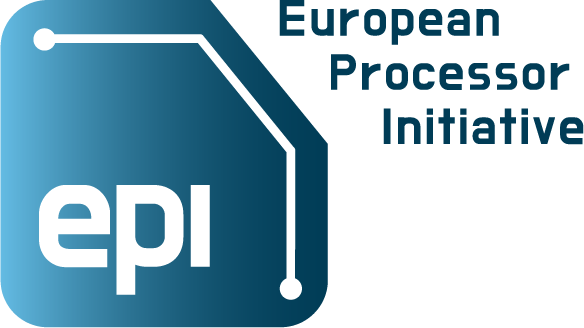Knut Hufeld, Senior Director R&D with Infineon and an Automotive Stream representative in EPI, talked about the developments in the stream with journalist Ralf Hartmann.
Infineon is known for microcontroller embedded real-time applications, so the European Processor Initiative EPI seems to be an ideal research field?
Definitely yes! With electric and autonomous driving as one of our main future issues, there will be an ever-increasing demand for computing power. Sophisticated driver assistance systems are one thing but new and highly complex applications like environment recognition in real-time will be another. Individual applications may be demanding, but operations like the fusion of sensor data from cameras, radar, or lidar systems are a real challenge. Conventional automotive microcontrollers are not capable to process the mass of information.
How could you bridge this impending gap in computing power?
One approach would be to take reliable automotive microprocessors like Infineon’s AURIX™ which are functional safe up to ASIL-D, and for the algorithms with an intense computing effort you just add processors from the consumer sector to be integrated with little or no adjustment or modification. This way, you create a safety/security configuration with the automotive-qualified real-time microprocessor controlling and monitoring the number crunchers from the consumer world.
Sounds like a makeshift constellation.
Indeed, using consumer parts is nothing but a work-around solution. First, because neither functional safety nor long-term reliability are ensured; second, they are not designed to the system, and moreover, they tend to use way too much energy.
What is the approach in EPI?
Regarding high-performance computing, HPC, the approach is to build a general-purpose processor, a GPP, which is designed for both high-level computing power and low-level energy consumption alike. This is where downsizing comes into play, which means that the number of computation kernels is reduced to what is necessary for automotive. We are talking about a derived variant of the GPP capable to serve typical automotive requirements on a minimum level and hence close the gap.
With its expertise in Automotive and as leader of Stream4 in EPI, which aspects does Infineon have to consider?
In the end, any technical achievement should be economically viable. Considering the high development costs, the challenge is to create downsized variants derived from HPC processors suitable for embedded constellations like in Automotive. Once they meet a high enough demand, they can be produced in sufficiently high unit numbers. The good news, recent developments indicate that the market will move in that direction, soon.
So, you bet on a win-win situation for HPC technology and the embedded sector?
As I said, the prospects are good. With a high demand for downsized variants and their mass production in the embedded sector, HPC can benefit from overall profitability generated by automotive as the driving belt. With this obvious solution, the high investments will pay off and HPC has a chance to become self-sustainable.
…which seems to be the key aspect in Stream4 as the mere automotive part in EPI?
That’s exactly it. Infineon coordinates the automotive part with partners like BMW, Elektrobit, Menta or Kalray, but also academic partners like Karlsruhe Institute of Technology, the Universities of Pisa and of Zagreb and Barcelona Supercomputing Centre. Our achievement is the implementation of a prototype automotive compute platform with integrated accelerators and other main IP blocks. Now, we are waiting for EPI partner SiPearl to come up with its first generation of HPC general-purpose processors. Then we can integrate and test them.
What will be your role in EPI’s upcoming evolutions?
We will still be present, albeit in a different way. In the first round, the Stream4 automotive team managed to accomplish promising results implementing the eHPC automotive platform, which reassures our pursued direction of development. In the upcoming round, we will adapt Infineon’s role towards an Industrial Advisor for embedded computing as an associated partner. This way, the EPI Initiative can take a full share of the limited financial funding resources for HPC technology, while we can shift our focus to setting up complementary projects under the European initiative KDT JU which then may give the opportunity for further synergies within EPI. In the meantime, we will, of course, meet our contractual obligations like exploiting the achievements of EPI. Regarding an effective promotion through face-to-face meetings, we hope that the current restrictions due to the COVID-19 pandemic will soon be lifted.

